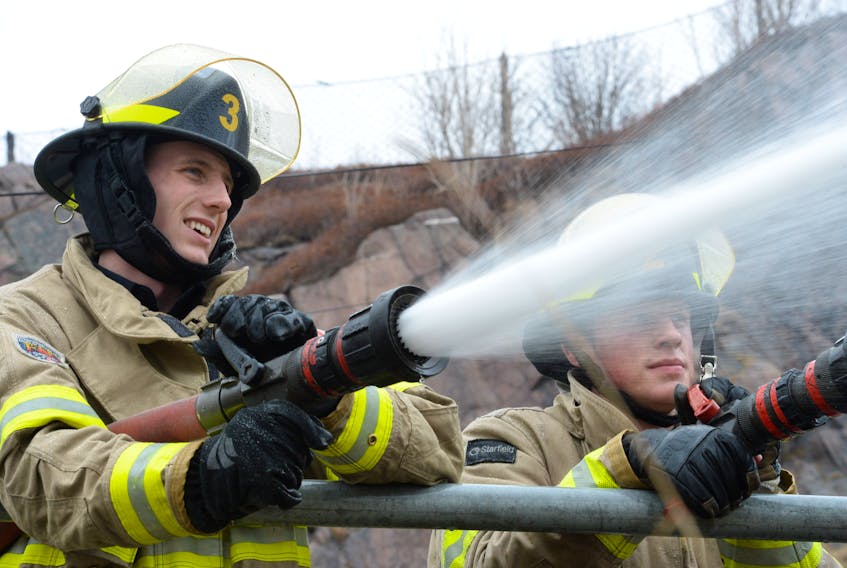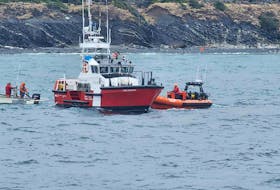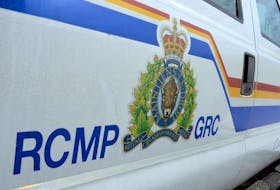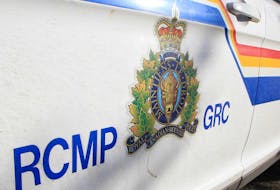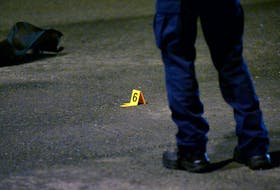Readiness to deal with natural disasters and other scenarios was on display Thursday as the City of St. John’s, its regional fire department and a number of emergency responder organizations held joint exercises to prepare and train these groups to deal with a disaster should one arise.
This strengthens the emergency preparedness plan for the city that includes planning and training exercises and sharing lessons that are learned in this training to prevent, protect against, respond to and recover from major disasters and other emergencies.
“The emergency preparedness exercise that was done this morning involved an event where there was major flooding that turned into freezing. It was also held at the same time as a response to a structure fire in The Battery involving the St. John’s Regional Fire Department,” St. John’s Mayor Danny Breen said from the shelter site operated by the Canadian Red Cross St. John’s division.
“In the event of what happened, a centre was set up here at the Paul Reynolds Centre with the Red Cross operating it. It is all part of the exercise to test our emergency response plan and look at ways that identify areas that we can address in the future.”
Emergency preparedness is something that takes a great deal of co-ordination.
Breen said the city gets great co-operation across the region from all of its various partners. It is important to providing services to the community and the volunteer organizations.
One of those partners is the Red Cross, under the supervision of Jillian Mullowney, the Red Cross disaster management co-ordinator for the St. John’s region, who simulated setting up a shelter as part of the Thursday exercise.
“The City of St. John’s has been a great partner with us. The experience our volunteers get at times like this, setting up a shelter is important for what we do,” Mullowney said.
“From the time we got the call, it took only two hours to set up this shelter. That is amazing, as I am the only staff person and everyone else is a volunteer.”
Mullowney said it doesn’t matter what time of day it is — when she makes the call for those volunteers to help with a disaster situation, the volunteers are mobilized and ready to go within 10 minutes of getting the call.
She noted it took 22 volunteers to set up the shelter at the Paul Reynolds Centre and this is just a portion of the available volunteers that have given countless hours to train and be ready to help in any way possible.
Like the Red Cross, the St. John’s Regional Fire Department always works to ensure it has the best habits and practices available to them to fight any type of fire.
“(This is a) simulated fire, testing our capabilities and the water flow down here. We are in a very restricted area so the amount of trucks we use, getting those vehicles to a structure fire, we are not getting them out here,” said Platoon Chief Brian Tucker of the St. John’s Regional Fire Department.
“We have a policy in place, of a pickup with a hose that we can drive in here. We have all the equipment we need and are running off the hydrant.”
Tucker said the fire department sought to test its capabilities by simulating even further than the original theme, as it projected the fire had spread to two more houses, forcing firefighters to evacuate the Outer Battery.
In Tucker’s 34 years in the fire service, he says, the department has been lucky it has never had to fight a fire that far down into the battery.
He said anything could happen in the future, so practicing for the likelihood a fire does occur in that area, he says all firefighters have to be ready.
“This is important for us and it is important for the residents down here. We have a good water supply here, and we are going to tie in some more stuff further back here to test our water supply further,” he said.
“One of the biggest things for us to learn … to a regular structure fire, we have seven vehicles, seven of our vehicles, and 16 personnel. To deploy them in an area such as this, where a lot of trucks can’t go there, we have trucks positioned up in Fort Waldergrave and out on Battery Road by Cabot Avenue and we can bring in other resources as we need them.”
These kinds of plans are not set in stone, and evolve over time, not only as resources change, but as circumstances of the city changing.
Breen said all of the information gathered throughout the exercise will prove useful.
“As we know, you can have the best plan in the world on paper, but when you look at how you do that operationally and how you move the various resources around and identify areas where you can improve, then that’s a big part of the process in preparing for that,” he said.
“Our staff, and all the groups that have been working with our emergency preparedness staff and our community partners get together and they’ll debrief on what happened and they’ll identify areas that need improvement or some things that went well, some things that didn’t go that great and refine the plan to make sure that we’re ready.”

